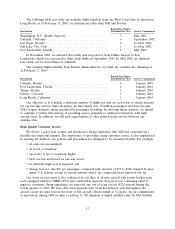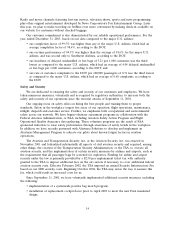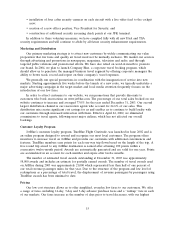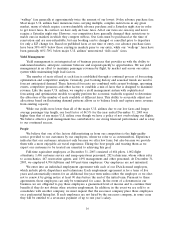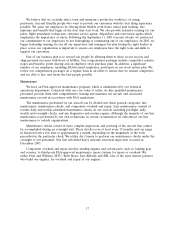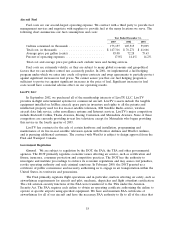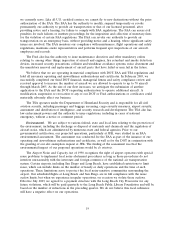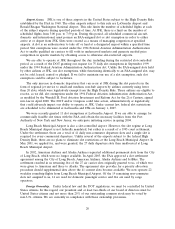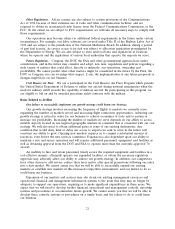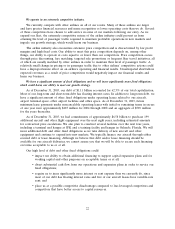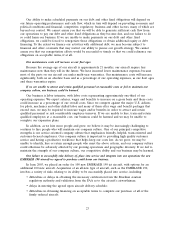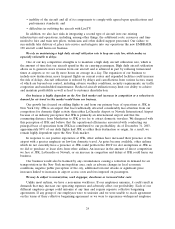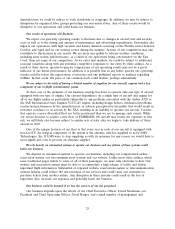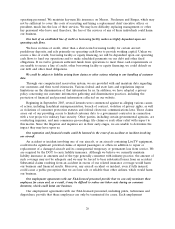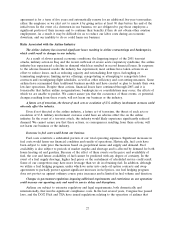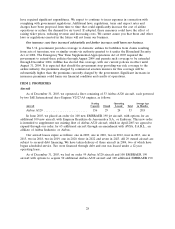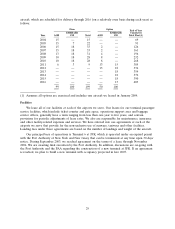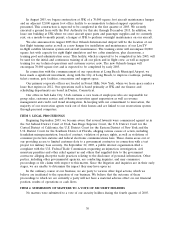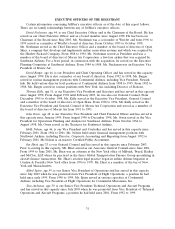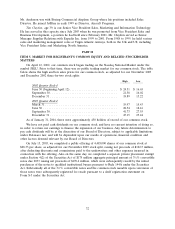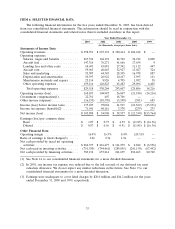JetBlue Airlines 2003 Annual Report Download - page 26
Download and view the complete annual report
Please find page 26 of the 2003 JetBlue Airlines annual report below. You can navigate through the pages in the report by either clicking on the pages listed below, or by using the keyword search tool below to find specific information within the annual report.Our ability to make scheduled payments on our debt and other fixed obligations will depend on
our future operating performance and cash flow, which in turn will depend on prevailing economic and
political conditions and financial, competitive, regulatory, business and other factors, many of which are
beyond our control. We cannot assure you that we will be able to generate sufficient cash flow from
our operations to pay our debt and other fixed obligations as they become due, and our failure to do
so could harm our business. If we are unable to make payments on our debt and other fixed
obligations, we could be forced to renegotiate those obligations or obtain additional equity or debt
financing. To the extent we finance our activities with additional debt, we may become subject to
financial and other covenants that may restrict our ability to pursue our growth strategy. We cannot
assure you that our renegotiation efforts would be successful or timely or that we could refinance our
obligations on acceptable terms, if at all.
Our maintenance costs will increase as our fleet ages.
Because the average age of our aircraft is approximately 21 months, our aircraft require less
maintenance now than they will in the future. We have incurred lower maintenance expenses because
most of the parts on our aircraft are under multi-year warranties. Our maintenance costs will increase
significantly, both on an absolute basis and as a percentage of our operating expenses, as our fleet ages
and these warranties expire.
If we are unable to attract and retain qualified personnel at reasonable costs or fail to maintain our
company culture, our business could be harmed.
Our business is labor intensive, with labor costs representing approximately one-third of our
operating expenses. We expect salaries, wages and benefits to increase on a gross basis and these costs
could increase as a percentage of our overall costs. Since we compete against the major U.S. airlines
for pilots, mechanics and other skilled labor and many of them offer wage and benefit packages that
exceed ours, we may be required to increase wages and/or benefits in order to attract and retain
qualified personnel or risk considerable employee turnover. If we are unable to hire, train and retain
qualified employees at a reasonable cost, our business could be harmed and we may be unable to
complete our expansion plans.
In addition, as we hire more people and grow, we believe it may be increasingly challenging to
continue to hire people who will maintain our company culture. One of our principal competitive
strengths is our service-oriented company culture that emphasizes friendly, helpful, team-oriented and
customer-focused employees. Our company culture is important to providing high quality customer
service and having a productive workforce that helps keep our costs low. As we grow, we may be
unable to identify, hire or retain enough people who meet the above criteria, and our company culture
could otherwise be adversely affected by our growing operations and geographic diversity. If we fail to
maintain the strength of our company culture, our competitive ability and our business may be harmed.
Our failure to successfully take delivery of, place into service and integrate into our operations the new
EMBRAER 190 aircraft we agreed to purchase could harm our business.
In June 2003, we placed an order for 100 new EMBRAER 190 jet aircraft, with options for an
additional 100 new aircraft. Acquisition of an all-new type of aircraft, such as the EMBRAER 190,
involves a variety of risks relating to its ability to be successfully placed into service, including:
• difficulties or delays in obtaining the necessary certification from the Brazilian aviation
regulatory authority and validation from the FAA as to the aircraft’s airworthiness;
• delays in meeting the agreed upon aircraft delivery schedule;
• difficulties in obtaining financing on acceptable terms to complete our purchase of all of the
firmly ordered aircraft;
23


